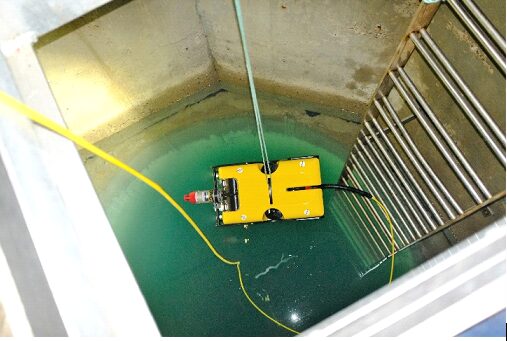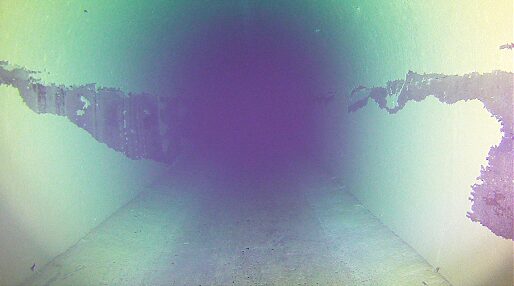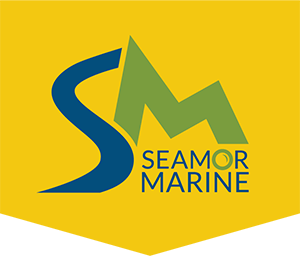Remotely Operated Vehicles (ROVs) Offer Efficient Solutions for Assessing the Integrity of Public Civil Infrastructure
Introduction
The growing crisis in North America’s civil infrastructure necessitates innovative solutions to ensure safety and functionality. Remotely Operated Vehicles (ROVs) have emerged as a vital tool for assessing infrastructure integrity, providing efficient and non-disruptive solution
The Problem
North America is currently facing a crisis related to the integrity and upkeep of essential civil infrastructure, from tunnels to bridges to dams. Use and demand in high-density areas is particularly intense, with many municipal districts facing emergency-level events, such as the recent public water shortage in Calgary, Alberta.
Municipalities must find effective solutions for assessing the integrity of civil infrastructure, particularly those with high-stress volume or with complicating environmental factors such as submerged structures. In addition, the disruption caused by breaks in service during the assessment process can be significant. Therefore, while survey procedures must be thorough and accurate, it is also extremely desirable to develop approaches that will minimize or eliminate any interruption in service to the public.
Faced with these challenges, Toronto Water deemed it necessary to inspect the Cross Harbour Watermain Tunnel (CWT), originally constructed in 1905 and last inspected in 1978 by Alebery, Pullerits, Dickson, and Associates. The CWT serves as a critical conduit for the city’s drinking water which is carried under the Toronto Harbour from Mugg’s Island to the John Street Pumping Station. Toronto Water awarded the vulnerability and capacity assessment contract to General Diving Contractors Inc. (GDC) and R.V. Anderson Associates Limited (RVA) who launched their assessment in 2018.
The Solution
SEAMOR Marine’s Chinook ROV was selected to conduct the survey operation. Capable of flying depths of up to 600 meters, it was customized with auxiliary components including one high-definition camera, one standard-definition camera, an Imagenex Model 831a Digital Pipe Profiling Sonar, and LED lights. Deployed from a barge that served as a staging site for the operation, the Chinook ROV was piloted down a vertical sheave to the entrance of the shaft to minimize any potential complications due to tether management.

Since human divers have limited diving capacity, both in terms of depth and duration, the Chinook ROV was able to optimize the operational efficiency of the survey conducted by GDC and RVA by allowing longer and more thorough dives. Beyond the time and cost considerations, the Chinook ROV also drastically minimized the potential safety risks to human divers given that surveys were conducted in a live flow environment.
The HD video footage captured by the Chinook ROV revealed that the CWT structural condition was similar to the 1978 report with minimal horizontal cracks at the spring line of the tunnel and crown of the tunnel in various locations. Notable new locations of brick deterioration or spring line crack formation were documented in their final report based on footage collected from the ROV-mounted HD camera and data from the auxiliary Imagenex Model 831a Digital Pipe Profiling Sonar. An example image captured by the Chinook ROV’s video feed is pictured below.

Conclusion
GDC and RVA determined that there were significant advantages to conducting their vulnerability and capacity assessment, using SEAMOR Marine’s Chinook ROV, most notably its ability to assess under live flow conditions to avoid operational disruptions. The clarity of the images provided the necessary data to accurately assess the current condition of the tunnel. Further, the compact design and six powerful thrusters allowed the Chinook ROV to access cavities that human divers were unable to access, all the while minimizing both the time and costs of conducting the assessment.
In conclusion, vulnerability and capacity assessment for public infrastructures such as tunnels, bridges, and dams using remotely operated vehicles (ROVs) such as SEAMOR Marine’s Chinook ROV is an extremely promising solution to addressing the civil infrastructure crisis, protecting human divers while also minimizing operational cost and duration for municipalities.
FAQs
How do ROVs enhance the assessment of civil infrastructure? ROVs provide detailed and accurate data, minimizing safety risks and operational disruptions during infrastructure assessments.
What makes SEAMOR Marine’s Chinook ROV ideal for infrastructure assessments? The Chinook ROV’s capability to dive up to 600 meters, coupled with its high-definition cameras and sonar technology, makes it ideal for thorough and efficient infrastructure assessments.
Why are ROVs preferred over human divers for deep-sea assessments? ROVs can operate at greater depths and for longer durations than human divers, reducing safety risks and increasing efficiency.
What were the key findings from the CWT assessment using the Chinook ROV? The assessment revealed that the structural condition of the CWT was similar to previous reports, with minimal new damage, accurately documented using the ROV’s advanced imaging technology.
How do ROVs minimize operational disruptions during assessments? ROVs can conduct assessments under live flow conditions, avoiding the need for service interruptions and ensuring continuous operation of essential infrastructure.
What cost advantages do ROVs offer in infrastructure assessments? ROVs reduce the need for human divers and extensive safety measures, resulting in significant time and cost savings.
